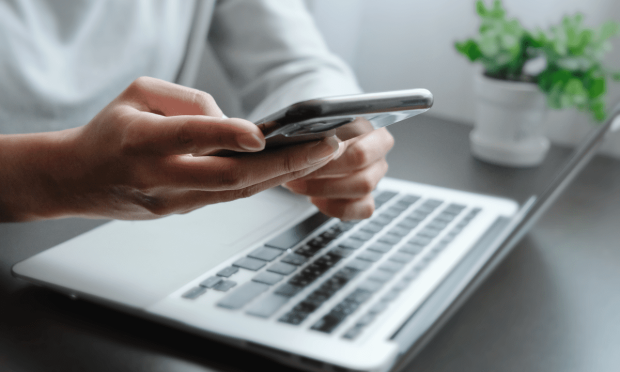Remote Onboarding Boom Being Secured By Multifactor Authentication

Remote onboarding has overtaken (some might say overwhelmed) banks and merchants all year long as a deluge of faceless applicants opened accounts and cards.
Financial institutions (FIs) and other issuers need more assurance than they’ve been getting, however, as cyber scams founded on false identities and bogus accounts are through the roof.
PYMNTS November 2020 Digital Consumer Onboarding Tracker® done in collaboration with Melissa, takes on the topic in depth and detail, noting that “Consumers in [a] recent study said that they preferred onboarding experiences that prioritize security ahead of speed, while 73 percent reported that their patience regarding account opening experiences had waned.”
Overtaxing the royal attention span — that of the consumer — is a mistake, so multifactor authentication (MFA) processes are morphing in various ways to reduce onboarding frictions while maintaining rigorous multifactor authentication (MFA) and other fraud-fighting tools.
Phone Call For You
Per the November Tracker, “Many banks, utility companies and government agencies have been leveraging two-factor authentication (2FA) for several years. This process requires consumers to provide not only their usernames and passwords to access services but also an additional form of verification, such as a biometric identifier or a code that can be emailed to them or sent via text message.”
Consumers can be surprisingly finicky these days when it comes to their personal identifiable data (PII), and additional security measures can strengthen trust at a critical time like this. It’s not all super high-tech either, as the humble phone call still plays a key role in proving identity.
“Phone verification and cross-checking is an important part of a comprehensive way to verify identity quickly, [frictionlessly] and cost-effectively. Over 80 percent of respondents in a recent survey reported fake users as a significant problem,” Bud Walker, chief strategy officer at Melissa, told PYMNTS. “When you onboard a new customer, phone verification makes it easy to verify they are who they say they are — before they enter your database — by connecting with the mobile device associated with the entered phone number.”
Walker added, “Using multisourced data from national and international 411 directories and proprietary sources, you can get valuable data attributes and risk assessment indicators including number ownership, whether the number is active and callable, line type and geographic information like country of origin. Additionally, phone verification is a vital component of two-factor authentication. [Your company can] easily send a one-time verification code via SMS or voice message or through your mobile app to authenticate a known user or verify a transaction. Phone verification provides your business with the ability to provide an additional layer of security to assure your customers that their accounts are safe and secure — quickly and unobtrusively.”
Taking Authentication To The Streets
Authentication needs are growing exponentially in a digital-first world, and the most digital-first place to start is the ubiquitous smartphone and its role as a portable bank.
According to the November 2020 Digital Consumer Onboarding Tracker®, “84 million Americans have looked for services online that they had previously sought out in person, and 75 percent say they expect to maintain some of these new habits once the health crisis ends. A key facet of this shift has been an increased reliance on mobile phones. Reports show that the number of consumers who have used their smartphones to open accounts has increased 43 percent since March.”
The Tracker adds, “Authentication measures that meet these customers where they already are — on mobile channels — could therefore be key to signing them up frictionlessly, keeping them engaged and safeguarding their checkout experiences.”
